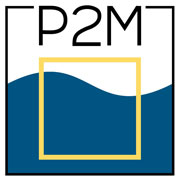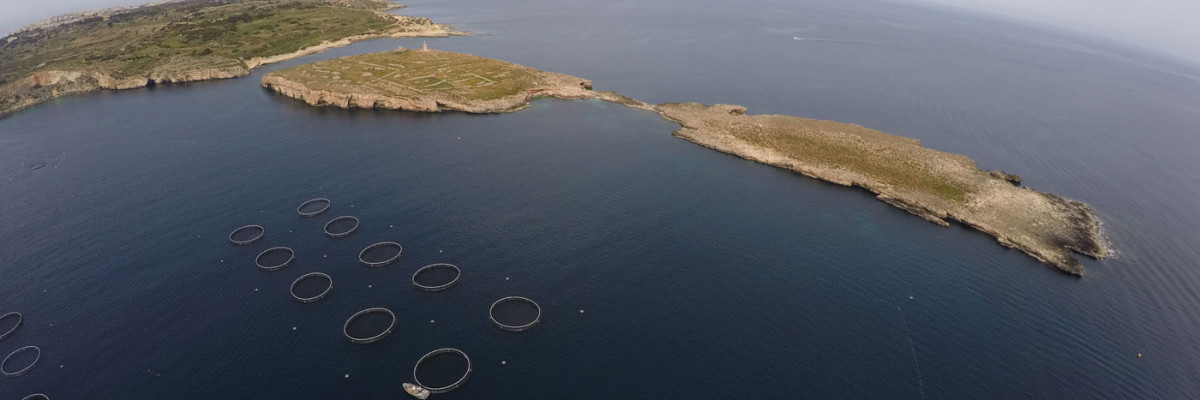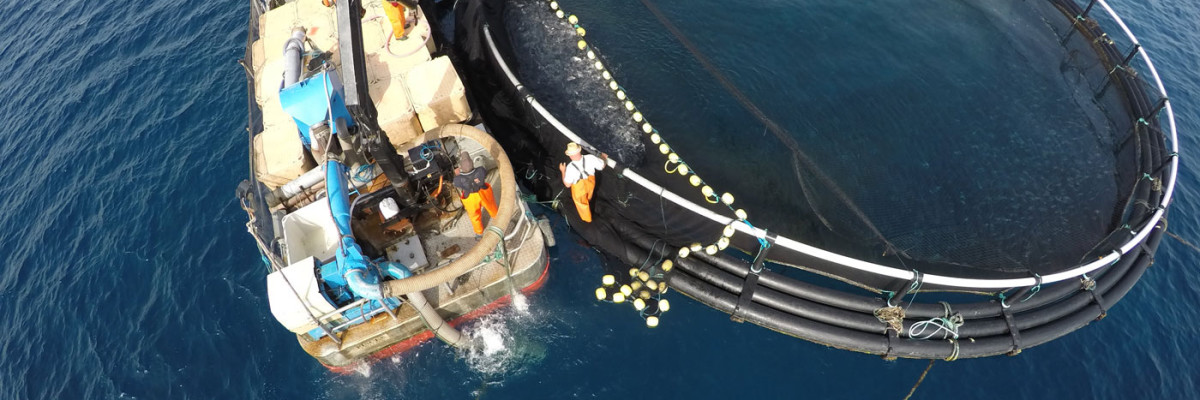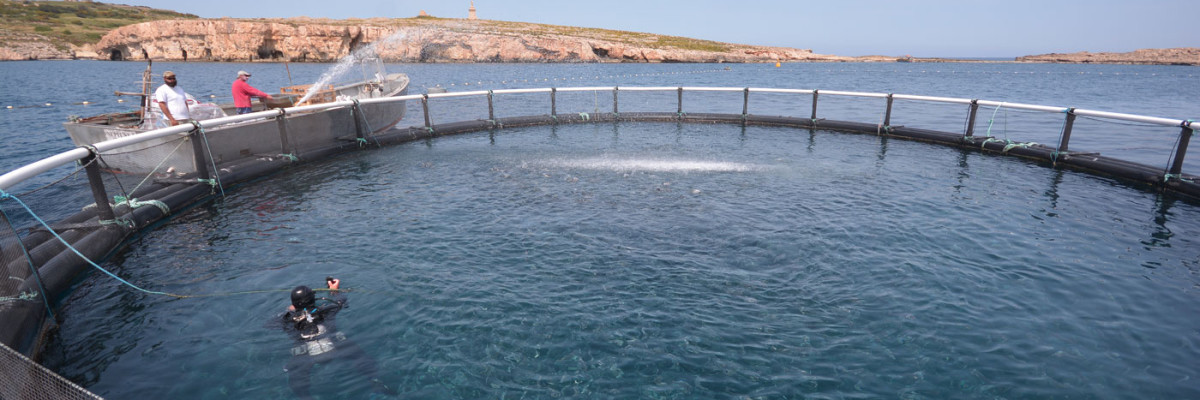Fish is a unique food source since it does not contain carbohydrates, it's rich in minerals and vitamins and is the only known food source of omega-3 polyunsaturated fatty acids.
Learn more
The world’s natural fish stocks are being depleted by over fishing and increased demand. The natural solution is fish farming, and this is why this method was developed - to farm fish just as we farm cattle.
Find out morePisciculture Marine de Malte always strives to minimise its environmental impact to maintain optimal conditions for its production and for other users of the marine resource.
Learn about our environmentAQUACULTURE: A PRIORITY
The European Commission highlights once again the importance of developing a sustainable and top-notch European aquaculture industry. Its aim is to have Member Sates agree to abolish barriers to the development of this sector. (August 2011)
FAQs
-
Q: Do we use antibiotics in our fish?
A: We have a strict policy of minimal use of therapeutical agents. However, just like people, even fish can get ill. We believe strongly in prevention rather that treatment and, since 2009 we have only had to treat a few individual cages of juveniles on two occasions.
Any treatment is carried out under strict veterinarian supervision. In the rare case that we have to use antibiotics, the fish are quarantined after treatment to ensure they are healthy and contain no traces of antibiotics.
-
Q: What makes up the feed?
A: The feed mainly contains fishmeal, fish oil, wheat meal, soy meal (non-GMO), soy oil, minerals and vitamins and is therefore 100% natural. The ingredients are processed in a special way so as to optimise the digestibility for the fish. The feed contains no antibiotics, attractants, growth promoters or hormones.
-
Q: How long does it take to grow a fish to market size?
A: It depends on the time of stocking and the species. The sea bream typically reaches market size after 12-14 months. The meagre is the fastest grower and typically reaches market size after 9-11 months.
-
Q: Does the fish farm affect water quality?
A: Several years of monitoring by independent companies indicate that, although there are seasonal variations in the parameters that we measure, the impact on the water quality from the fish farm is negligible.
-
Q: Is regular water quality testing carried out?
A: We carry out water testing on a monthly basis from all our sites. The sampling and analyses are done by the Malta Centre for Fisheries Sciences, an independent contractor operating in the sector. Samples taken at various depths are tested for the following parameters:
1. Temperature
2. PH
3. Dissolved oxygen
4. Salinity
5. Nitrates
6. Phosphates
7. Ammonia
8. Chlorophyll
9. Coliform bacteria -
Q: Is it safe to swim near a fish farm?
A: It is perfectly safe to swim near the fish farm. However, because it is a private company and, so as not to disturb the fish unduly, the boundary line must be respected. No sailing, fishing or swimming is allowed within the boundary line.
-
Q: What is the environmental impact on the seabed?
A: The environmental impact of a fish farm on the seabed depends on many factors. We do have an impact, but it is mainly localised to the area beneath the cages. Our latest independent benthic survey, carried out in 2005 by Ecosery Limited, revealed that, although the impact can be significant immediately beneath a cage, the effect diminishes quickly moving away from the cage.
-
Q: Do farmed fish carry disease? Can they pass it on to wild fish stocks?
A: All our fish are disease free when they arrive in Malta. It is more likely that our fish contracts disease from the wild fish, but sometimes the disease can be attenuated due to the high number of fish present in the cages – each cage will on average hold 150,000 fish.
-
Q: Can I freeze your fish?
A: Yes, our fish are well suited to be frozen but it is important to clean the fish well before freezing.
-
Q: What is the shelf life of your fish?
A: The shell life depends very much on the temperature at which it is kept. If they are kept on ice, the shelf life can be up to two weeks, whereas if kept in a normal fridge the shelf life is only around five days. Frozen to -18°C, the shelf life is extended to three months.
Under all circumstances, it is important to clean the fish as soon as possible, and keep good hygiene. When cleaning the fish, it is important to remove all the innards and the gills. Wash the fish in clean, running water before storing.
-
Q: Does farmed fish taste different to wild fish?
A: Taste is obviously a subjective matter, but blind tasting trials often found that there is very little difference between a farmed fish and a wild fish. The taste of farmed fish is very much a reflection of the high level of superior quality fish meal used in modern fish feeds.
Actually, as opposed to wild fish, which are more subject to seasonal changes, we have an advantage of being able to supply a full-flavoured fish all the year around.
-
Q: Is your form of aquaculture sustainable?
A: Yes, despite the fact that the species we farm are carnivorous, the industry is now a net producer of high quality fish. The aquaculture industry has traditionally used the Fish Feed Dependency Ratio (FFDR) to calculate how many kilogrammes of wild fish, mainly sardines, are required to produce one kilogramme of a farmed commercial species. FFDRs, therefore, measure the sustainability of fish farming with respect to inputs from wild fisheries.
Historically, the FFDR was greater than 1.0, meaning that fish farming was dependent on the use of fish caught in the wild to be feasible. However, due to some innovations, these species’ FFDR is now closer to 0.6, meaning that the aquaculture industry is already sustainable and is now well on its way to its ultimate goal of zero dependency on marine resources.
Featured Video
Pisciculture Marine de Malte Limited is considered to be the pioneer of aquaculture in Malta. Today the Company employs almost 40 persons at our various locations in St. Paul’s Bay, Mellieha and Imġiebaħ.
The company also employs on an indirect basis a number of contractors that supply their goods and services. The featured video gives an idea of the day to day operations carried out by the Company.



